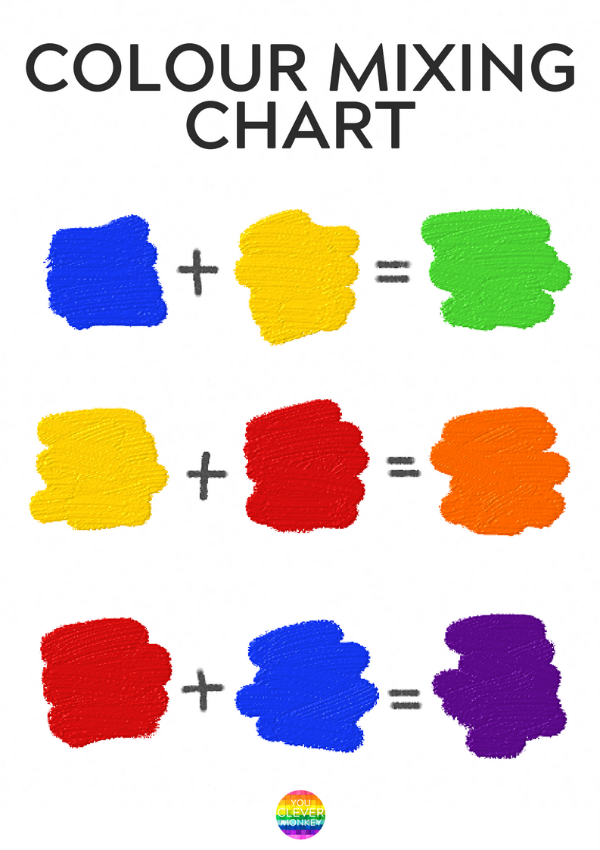


Combining primary colors full#
The full gamut of color available in any additive color system is defined by all the possible combinations of all the possible luminosities of each primary color in that system. Additive color is also used to predict colors from overlapping projected colored lights often used in theatrical lighting for plays, concerts, circus shows, and night clubs. The combination of two of the common three additive primary colors in equal proportions produces an additive secondary color- cyan, magenta or yellow. Instead, subtractive color is used to model the appearance of pigments or dyes, such as those in paints, inks. Examination with a sufficiently powerful magnifying lens will reveal that each pixel in CRT, LCD, and most other types of color video displays is composed of red, green, and blue light-emitting phosphors which appear as a variety of single colors when viewed from a normal distance.Īdditive color, alone, does not predict the appearance of mixtures of printed color inks, dye layers in color photographs on film, or paint mixtures. These predictions are only applicable in the limited scope of color matching experiments where viewers match small patches of uniform color isolated against a grey or black background.Īdditive color models are applied in the design and testing of electronic displays that are used to render realistic images containing diverse sets of color using phosphors that emit light of a limited set of primary colors. Additive color predicts perception and not any sort of change in the photons of light themselves.

Modern formulations of Grassmann's laws describe the additivity in the color perception of light mixtures in terms of algebraic equations. the perceived color can be predicted by summing the numeric representations of the component colors. James Clerk Maxwell, with his color top that he used for investigation of color vision and additive colorĪdditive color or additive mixing is a property of a color model that predicts the appearance of colors made by coincident component lights, i.e. The intersection of all three primary colors together yields white. Red, green, and blue lights combining by reflecting from a white wall: secondary colors yellow, cyan, and magenta are found at the intersections of red and green, green and blue, and blue and red. Model for predicting color created by mixing visible light


 0 kommentar(er)
0 kommentar(er)
